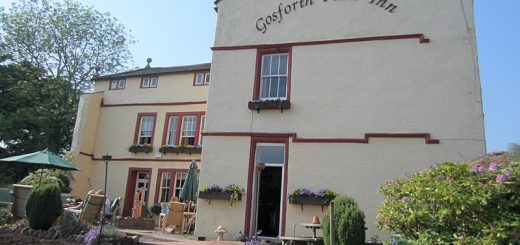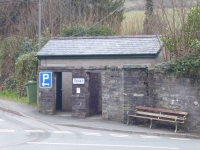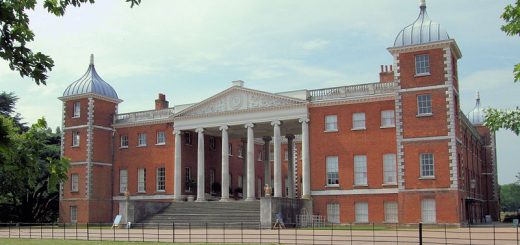St Nicholas Church, Alcester
Inside the Parish Church of St Nicholas in Alcester (parts of which date back to the 14th century) can be found the tomb of Sir Fulke Greville (Died 10 November 1559) and his wife Elizabeth Willoughby, 3rd Baroness Willoughby de Broke, de jure 11th Baroness Latimer (Born 1512 – Buried 15 November 1562) and it was beside this tomb, according to the Paranormal Database, that the apparition of the aforementioned Fulke Greville has been witnessed.
 Sir Fulke Greville was the second son of Sir Edward Greville (Born 1481 – Died 22 Jun 1528) and Anne Denton. He married one of his father’s wards, Elizabeth Willoughby, daughter of Edward Willoughby (Died 1517), Granddaughter of Robert Willoughby, 2nd Baron Willoughby de Broke (Died 10 or 11 November 1521).
Sir Fulke Greville was the second son of Sir Edward Greville (Born 1481 – Died 22 Jun 1528) and Anne Denton. He married one of his father’s wards, Elizabeth Willoughby, daughter of Edward Willoughby (Died 1517), Granddaughter of Robert Willoughby, 2nd Baron Willoughby de Broke (Died 10 or 11 November 1521).
[img_assist|nid=3955|title=|desc=|link=popup|align=right|width=200|height=344]In the days of Henry VIII, I read of Sir Edward Greville, of Milcote, who had the wardenship of Elizabeth, one of the daus. of the Lord Brooke’s son. The knight made a motion to his ward to be married to John, his eldest son, but she refused, saying that she did like better of Fulke, his 2nd son. He told her that he had no estate of land to maintain her; and that he was in the King’s service of warre beyond the seas, and therefore his return was very doubtful. Shee replied and said, that shee had an estate sufficient both for him and herself, and that she would pray for his safety and wait for his coming. Upon his return home, for the worthy services he had performed, he was by King Henry honoured with a knighthood; and then married Elizabeth, the dau. of the Lord Brooke’s son.
[The Genealogie, Life and Death of Robert, Lord Brooke (1644)]
They had three sons and eight daughters. Their oldest son was Sir Fulke Greville (Born 1536–Died 1606) who was in turn father to the Elizabethan poet, dramatist and Member of Parliament, Fulke Greville, 1st Baron Brooke, de jure 13th Baron Latimer and 5th Baron Willoughby de Broke (Born 3 October 1554 – Died 30 September 1628).
The following description of the tomb appears in ‘A History of the County of Warwick: Volume 3: Barlichway hundred’ (1945) by Philip Styles:
At the west end of the north aisle is a well-preserved altar-tomb with the alabaster effigies of Sir Fulke Greville, 10 Nov. 1559, and Lady Elizabeth (Willoughby) his wife, 1562. The knight wears the full plate armour of his younger years, sword and dagger: his hands are in prayer and his feet rest on a lion: about his shoulders is a chain with a pendent cross. He wears three rings on the fingers of each hand. His head rests on his helmet, which bears a crest of a greyhound’s head. His armour is painted black with gilded enrichments. The lady, on his left, wears a close-fitting cap and veil, a small ruff and a necklace. The tight bodice is held by knotted cords, and has slashed and puffed sleeves, also pendent false sleeves with cheveron ornament: an overskirt is folded back revealing the pleated underskirt. From her waist is a pendent chain with a flat round sachet. Over all she wears a mantle loosely tied across her breast by pendent cords with tasselled ends. Her head rests on a cushion. Her hands are in prayer and she wears three rings on each. At her feet is a tiny dog biting the end of her overskirt. The effigy has remains of colouring, the mantle being red; the other garments were probably black. The top slab has moulded edges in which is the carved inscription. At the angles of the sides of the tomb are round shafts with spiral ornament, and similar intermediate shafts divide the longer sides into three bays. Each middle bay bears a shield of arms in a garter, the dexter Greville, the sinister Willoughby. In the other bays are represented the children as weepers: the dexter bays have three and four sons respectively, the eldest in armour, the others in gowns, except the sixth who is shown in grave-clothes. On the sinister side are eight daughters, the sixth being in grave-clothes. At the head end of the tomb is a quartered shield of Greville in a garter with nude men as supporters. At the foot end, under the wording: ‘Arma Richardi dni. de bello campo, baronis de Powick & dni. de Alincester’ are a shield with the quartered Greville arms, a lozenge with the twenty Willoughby quarterings, and between them a small shield of Beauchamp quartering Ufflete. The quarterings of Greville and Willoughby are repeated on small shields below the top string.
Above the tomb, fixed to the respond of the colonnade, is a funeral helmet with a comb and beaver, and a painted framed wooden panel charged with the Greville arms.




Recent Comments